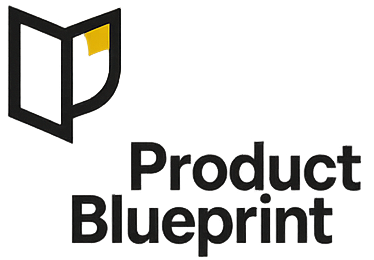TL;DR
A trade-off memo is a one-page ADR that compares two to four options quickly. We tie each memo to an Objective/KR, decision rule, guardrails, and exit triggers.
Process:
- Circulate async with a 24-hour comment window.
- Decide using a pre-agreed rule.
- Log the outcome.
Key Elements:
- One quick calculation—RICE, payback, or NPV.
- Four to six criteria that matter most.
- Keep it short, ethical, and searchable.
Key definitions (one line each)
Trade-off memo: A one-page document recording a choice, the viable options, and why one wins.
ADR (decision record): A dated, searchable entry in your decision log.
Decision rule: The pass/fail test that determines the outcome (e.g., “Base NPV > $0 and payback ≤ 12 months”).
Guardrail: A “do no harm” limit (e.g., a11y defects ≤ 0.5/1k MAU).
Exit trigger: A condition that forces a revisit (e.g., vendor price +30%).
Owner: The accountable person who implements and reports results.
KR (Key Result): A measurable target the decision serves.
When to use (and when not)
Use trade-off memos when:
- You have two to four solid options and need a clear decision within 24 hours.
- The impact affects money, risk, or user trust but fits on one page.
- Team members work across different time zones or have packed schedules.
Don’t use memo writing when:
- The choice is small or obvious—just make the call directly in your ticket.
- The decision can’t be changed later or affects company strategy—create a full business case and meet live.
- You don’t have enough information yet—spend 24–48 hours gathering data first, then write the memo.
The 1-pager ADR format (copy this layout)
Title — Make it short and specific, like “Data export: buy vs build.”
Date & owner — Use YYYY-MM-DD format and include the decision owner’s name.
Objective & KR — State which outcome this decision serves. For example, “Churn 3.2% → 2.6% by Q4.”
Decision rule — Write your clear pass/fail test.
Options considered — List two to four options only.
Criteria & quick scores — Include four to six items that matter most. Consider TTV, 3-yr TCO, compliance/a11y, lock-in, risk, and team fit.
Quick calculation — Pick one method: RICE, payback, or NPV. Use round numbers.
Risks & mitigations — List the top three risks with how you’ll monitor them.
Guardrails — Cover privacy, accessibility, security, and non-manipulative UX requirements.
Decision & rationale — Write two sentences that tie back to your criteria.
Exit triggers — Define concrete conditions that would reopen this decision.
Next steps & owners — Assign who does what and by when. Time ranges work fine.
Links — Include evidence, designs, and tickets.
Step-by-step playbook (align in 24 hours)
1) Draft (30–45 minutes)
Write the memo first using short sentences. Skip the slides. Include one calculation, like RICE, payback, or NPV. List the top three risks clearly.
2) Circulate (10 minutes)
Post the memo in our shared channel or document. Mention all stakeholders directly. Ask for “LGTM / concerns / alternative” responses. Set a deadline for tomorrow 18:00 local time.
3) Collect async input (same day)
Tag all comments to specific sections of the memo. Require concrete alternatives instead of general feedback. Capture any dissent in brief, clear terms.
4) Decide (next morning)
Apply our decision rule without changing the criteria. Lock the memo by adding a one-paragraph decision and rationale section.
5) Log & broadcast (15 minutes)
File the decision in our ADR index with date and keywords. Post a three-line summary covering the decision, reasoning, and next steps.
6) Implement & monitor (weekly)
Report KR movement and guardrails status. Schedule a 30-minute review if any trigger activates.
7) Close the loop (quarterly)
Add a one-line result such as Hit (+2.1 pp activation), continuing or Missed, pivoted. These action items help us track outcomes against our original timeline and deadlines.
Trade-off memo vs meeting vs business case
Trade-off memos work best for most product and engineering decisions. They’re fast and searchable. They force clear thinking. But you should avoid them for major bets.
Live meetings handle conflict well and capture nuance better than written formats. On the downside, they create calendar burden and leave weak records.
Business cases provide deep analysis for finance teams and large investments. They move slowly and sometimes risk becoming analysis theater.
Realistic examples (≤5 lines each)
KYC Vendor Decision Memo
We compared buying versus building our KYC solution using a 3-year NPV at a 10% discount rate. The buy option showed $413k NPV, while build landed at $897k NPV, creating $484k in savings. Time-to-value for buying was 4 weeks, which met our 6-week requirement. We decided to buy and plan to mitigate vendor lock-in through abstraction layers and data export rights.
Feature Priority Request Memo
Our team used RICE scoring to compare streaks versus coach chat features for the fitness app. Streaks scored 23,333 (50k reach × 1.0 impact × 0.7 confidence ÷ 1.5 effort), while coach chat scored 5,600. We implemented WCAG accessibility labels and avoided manipulative design patterns. The memo recommended shipping streaks first, with coach chat research following.
Policy Change Memo Example
We set trigger conditions for revisiting our KYC vendor decision. Annual spending above $220k or SLA performance below 99.9% twice per quarter will prompt reassessment. For feature decisions, retention improvements below 2 percentage points within 6 weeks trigger pivots to alternative approaches.
Quick calculation (worked example)
Payback (months) = Up-front / (Monthly benefit − Monthly COGS)
Here’s the example: Up-front cost is $30k, monthly benefit is $12k, and monthly COGS is $4k.
Payback = 30,000 / (12,000 − 4,000) = 3.75 months
Stick to one calculation per memo and keep numbers round.
Guardrails & ethics (hard gates)
We enforce strict rules that block product releases when core standards aren’t met. Privacy requires data minimization, clear data flow maps, and full delete/export rights.
Accessibility means WCAG 2.1 AA compliance with proper keyboard focus, contrast ratios, labels, and captions.
We handle security through least privilege access, encryption, patch SLAs, and incident runbooks.
Our non-manipulative growth policy bans dark patterns in consent flows, pricing displays, or cancellation processes.
We protect fairness by never shifting risk to vulnerable users just to improve metrics.
Compliance covers data residency rules and audit logs for any personal information handling.
If any guardrail fails, we don’t ship the product, no matter what the performance scores say.
Pitfalls & better alternatives
Wall-of-text memos confuse readers and hide key points. Write one page with bullets and a single calculation. Link to evidence instead of copying it.
Straw-man options waste time on unrealistic choices. Only include viable options with realistic scope, effort, and risk.
No decision rule leads to bias after the fact. Write the decision rule first to stay objective.
Cost-only thinking misses important factors. Add time-to-value or cost of delay to your criteria.
Silent dissent creates problems later. Require LGTM / concerns / alternative responses and record dissent briefly.
No exit plan leaves us stuck with bad decisions. Add triggers like price changes or missed KPIs and prepare alternatives ahead of time.
Mini FAQ
How long should our ADR be?
Keep it to one page. Link an appendix if we need more detail.
Who makes the final decision?
The owner decides using the decision rule after comments close.
Should we include specific dates?
Use ranges in next steps. Exact dates belong in our delivery plan.
How many options should we present?
Two to four options work best. One option means we’re just sharing a notification, not exploring trade-offs.
Where do we store our memos?
We keep them in a searchable ADR index. This can be a folder or tool tagged by product area and quarter.
1-page trade-off memo template (paste and fill)
Decision: < short title > | Owner: < name > | Date: < YYYY-MM-DD >
Objective & KR
- Objective: < what outcome this serves >
- Key Result: < metric baseline → target, time window >
Decision rule
- Approve if: < e.g., Base NPV > $0 AND payback ≤ 12 months >
- Revisit if: < e.g., adoption −30% OR vendor +30% OR SLA < 99.9% twice/quarter >
Options considered (2–4)
- < Option A — short description >
- < Option B — short description >
- < Option C — optional >
Criteria (score 1–5)
- Time-to-value: A= , B=
- 3-year TCO/COGS: A= , B=
- Compliance & accessibility: A= , B=
- Lock-in & exit: A= , B=
- Team fit & delivery risk: A= , B=
Quick calculation
Choose one: RICE / Payback / NPV with numbers and results
Risks & mitigations (top 3)
- < Risk #1 > — < mitigation / monitor metric >
- < Risk #2 > — < mitigation / monitor metric >
- < Risk #3 > — < mitigation / monitor metric >
Guardrails
- Privacy: < notes >
- Accessibility: < notes >
- Security/compliance: < notes >
- Non-manipulative growth: < notes >
Decision & rationale
- Chosen option: < A/B/C >
- Because: < 2–3 bullets tied to criteria >
Exit triggers
- < Trigger 1 >
- < Trigger 2 >
Next steps & owners
- < Step > — < Owner > — < range or milestone >
Links
- Evidence: < link >
- Designs/Tickets: < link >
- Financial model: < link >





